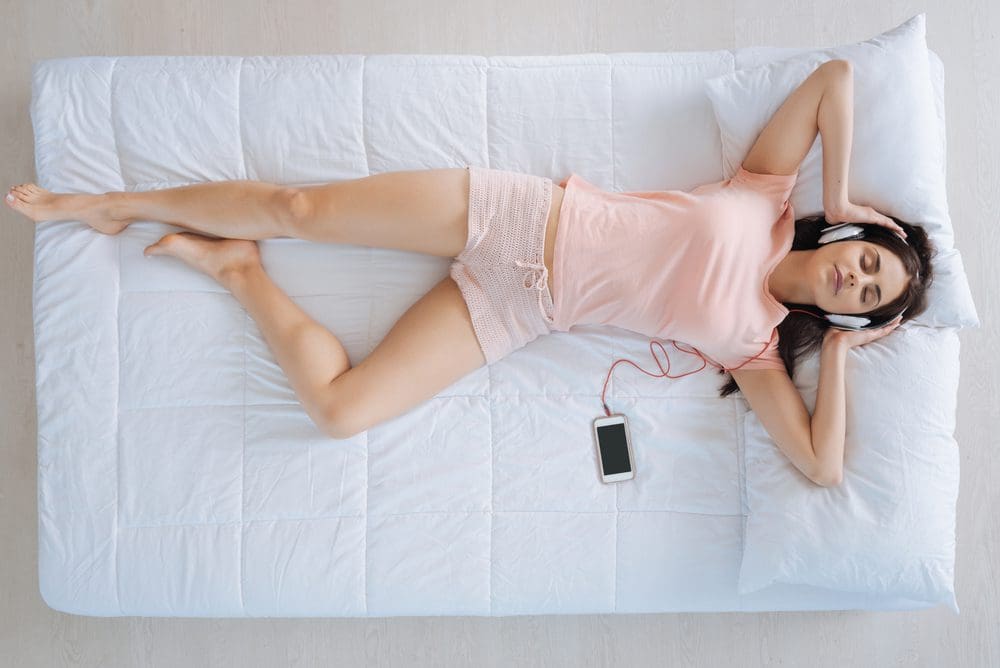Full Disclosure: Clicking on these links could mean a tiny commission for me, at no extra cost to you.
It’s easy for stress to creep up on us, often going unnoticed until it manifests as physical discomfort, emotional overwhelm or a full-blown panic attack. Progressive Muscle Relaxation (PMR) offers a proactive approach to stress management, promoting relaxation and mental clarity through the systematic tensing and relaxing of muscle groups in the body. It’s a simple yet powerful tool to help soothe the mind and body whenever you need an extra boost of support.
What is Progressive Muscle Relaxation (PMR)?
Progressive Muscle Relaxation (PMR) is a deep relaxation technique that involves tensing and then relaxing different muscle groups in the body, and noticing the sensations of relaxation. It was first developed by American physician Edmund Jacobson in the early 1920s. Jacobson found that physical relaxation could be achieved by voluntarily tensing and then relaxing certain muscle groups in the body. As such, it’s a great technique for identifying areas of tension and promoting a deep state of physical relaxation, making it particularly beneficial for those suffering from anxiety.
The Benefits of Progressive Muscle Relaxation for Mental Health
When it comes to mental health management, Progressive Muscle Relaxation (PMR) stands out as a remarkably effective tool. This simple yet profound technique not only eases the body but also calms the mind, offering a dual benefit that is essential for many people today. By systematically tensing and relaxing different muscle groups, PMR helps to dissipate stress, alleviate symptoms of anxiety, and enhance overall emotional well-being. Let’s explore how this accessible practice can be a game-changer in maintaining and improving mental health.
Stress Reduction: Regular practice of PMR can significantly lower stress levels. As muscles relax, the body sends signals to the brain, activating a relaxation response. This response reduces the levels of cortisol, a stress hormone, and enhances the production of mood-elevating neurotransmitters such as serotonin and dopamine.
Anxiety Relief: PMR can be particularly beneficial for those suffering from anxiety disorders. The methodical nature of the practice helps break the cycle of continuous worry and tension by focusing the mind on the body and breath, diverting attention from anxious thoughts.
Improved Sleep: By easing muscle tension, PMR helps calm the mind and body, making it easier to fall asleep and improve the quality of sleep. This is especially useful for those who struggle with insomnia or sleep disturbances linked to stress.
Enhancement of Overall Well-being: Beyond alleviating stress and anxiety, PMR encourages a greater awareness of physical sensations and mental states, promoting mindfulness and a sense of bodily autonomy and control over one’s psychological health.
How to Practice Progressive Muscle Relaxation
The process of PMR starts by tensing a specific muscle group for a few seconds and then releasing that tension, allowing the muscle to relax completely. This practice is typically performed in a sequence, starting either from the lower part of the body and moving upwards, or vice versa. The key is to focus on the contrast between tension and relaxation, which can help enhance your awareness of physical sensations and aid in relaxation.
A Step-by-Step Guide to Progressive Muscle Relaxation
Here’s a simple guide to get you started with PMR:
- Find a Comfortable Spot: Begin by finding a quiet, comfortable place where you won’t be disturbed. You can sit in a comfortable chair or lie down on your back.
- Breathe Deeply: Take a few deep breaths before you begin, inhaling slowly through your nose and exhaling through your mouth to set a tone of relaxation.
- Tense and Relax Muscle Groups: Starting with your feet and moving upwards, tense each muscle group vigorously (but without straining) for about 5 seconds and then relax it for 30 seconds. Pay attention to the feeling of release as your muscles relax.
- Progress Through the Body: Systematically work through the following areas: feet, lower legs, upper legs, stomach, chest, arms, hands, neck, face, and head. Take your time to focus on each part.
- Focus on Your Breathing: Throughout the exercise, maintain deep, even breaths. This helps enhance the relaxation effect.
- Conclude with a Mental Scan: After you’ve worked through all the muscle groups, spend a minute or two just lying quietly with your eyes closed. Mentally scan your body for any remaining tension and allow it to release.
- Reflect on the Experience: Once you finish, reflect on the sensations you experienced and the calmness of your mind. With practice, you’ll likely find significant improvements in your mental and physical responses to stress.
Integrating PMR into Your Daily Routine
To reap the maximum benefits, aim to practice PMR daily. Initially, it might feel like it’s consuming a part of your day, but as you get accustomed to the exercises, they will become a natural and quick part of your routine. Many find that starting or ending their day with PMR helps prepare them for the day or unwind before bed.
Wrapping Up: Finding Calm with Progressive Muscle Relaxation
Using Progressive Muscle Relaxation as part of your daily routine can be transformative. Whether you’re battling stress, managing anxiety, or simply seeking a better night’s sleep, PMR offers a practical and effective solution. The beauty of PMR lies in its simplicity and the minimal time investment it requires. With regular practice, the benefits extend beyond immediate relaxation, fostering long-term resilience against life’s stresses and enhancing overall mental health.
Remember, like any skill, the effectiveness of PMR improves with practice. Make it a part of your self-care regimen to experience its full potential. By dedicating just a few minutes each day to this technique, you can step towards a more relaxed, focused, and balanced life. So, why wait? Start today, and feel the difference as you journey towards a healthier, more peaceful you.
FAQs About Progressive Muscle Relaxation
- How long does it take to see benefits from PMR?
While immediate relaxation can be felt right after a session, long-term benefits such as reduced anxiety and better sleep quality might take a few weeks of consistent practice. - Can PMR help with physical pain?
Yes, PMR can be effective in managing chronic pain conditions by reducing muscle tension and enhancing mindfulness, which alters pain perception. - Are there any risks with PMR?
PMR is generally safe. However, those with existing muscle injuries should proceed with caution and consult a healthcare provider if unsure.
By integrating Progressive Muscle Relaxation into your daily life, you not only enhance your mental health but also invest in a practice that nourishes your physical well-being. As you continue on your journey of stress management and self-care, remember that techniques like PMR are tools to help you regain control, ensuring a calmer, more serene mind and body.








